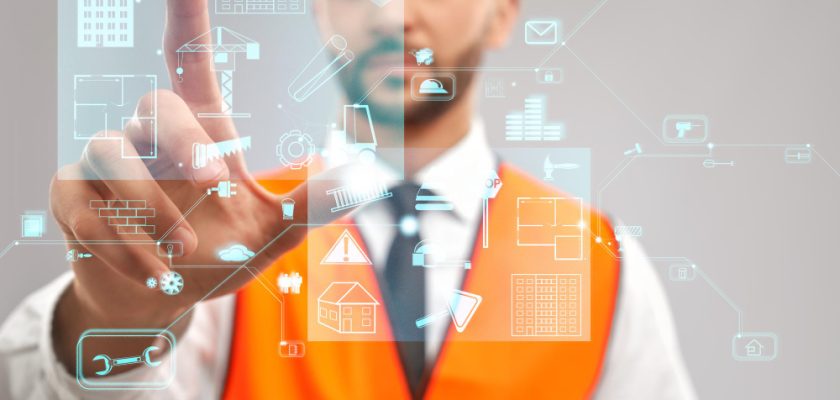The construction industry is growing rapidly, and technology is making it easy for it to become more competitive in the market.
Modern new construction technology cuts down the construction workers’ extra time and effort and makes it easy to grow further.
Manufacturers have responded to the market’s shifting demands by developing innovative products. Since introducing digital technologies, this has become a burgeoning market for the building industry. The most significant advancements in construction have occurred in the field of software.
Major construction projects consume enormous amounts of resources and generate enormous amounts of data. The key to financial success is maximizing this data’s value while streamlining the analysis and reporting processes.
The use of new technology in building project management has resulted in a significant reduction in waste and inefficiencies.
This broad term refers to various activities: resource scheduling and tracking, equipment maintenance, and team cooperation.
The best part is that these tools make it easier to get more work done. Smaller construction organizations can adopt cloud-based project management tools. Double-digit percentage reductions in project costs and durations can be achieved with these.
Top 10 Modern New Technology in Construction:
Innovators in both the digital and physical worlds are constantly working together. Listed below are ten recent developments that touch on both of these facets. Consider how they can change and get your company ready for the future.

https://www.freepik.com/free-photo/architect-working-with-virtual-3d-projection_26673601.htm#query=New%20technology%20in%20construction&position=0&from_view=search&track=ais
1. Green and Innovation Materials:
The use of recycled materials in construction dates back to the 1960s. Currently, green construction is a desirable and profitable investment for construction companies. Building crews can reuse multiple materials.
To begin with, these materials were a combination of more traditional ones. An asphalt or concrete mixture that includes reusables can even be more efficient. Solar and wind power are making their way into popular construction as well.
2. Wearables Mobility:
Connectivity is the most important factor in today’s market’s efficiency gains. Mobile and cloud-based tools can connect workers with projects in real-time.
This implies a continuous link between the offices in the back and the employees on the front lines. In other words, it entails real-time inputs of crucial project data for analysis and responses.
The way employees interact in the workplace is being improved by the use of wearables. A job well done is well done if all of the moving pieces are present and accounted for.
3. Prefabrication:
Prefabrication is not new, but modern technology has made it more accessible. Thanks to mobile devices, everyone in the manufacturing process can access real-time information. Stakeholders have access to all relevant information about the project from start to finish.
Prefabrication techniques and results are also improving thanks to innovators’ new ideas. Both in North America and Europe, modular building is becoming increasingly popular. Allows five workers to install hundreds of hospital bathrooms in a few days.
4. 3D Printing:
3D printing was created by an engineer and quickly drew the attention of designers and architects. Models that could be discarded and reprinted while the design was being refined were created using this method. Construction is a new home for 3D printing, where large-scale projects are being completed.
Two bridges were built with the help of 3D printing in 2017. At this point, the tool had reached a crucial inflection point.
In the building business, a new tendency has evolved: 3D printing. There are only a few examples of 3D-printed houses for sale, with government rules and building permits being the major early barriers. Governments, NGOs, and private companies will all employ 3D printing in construction in the future, according to 3drific.
There is no end to the possibilities. Traditional housing is prohibitively expensive in low- and middle-income areas worldwide. Mobile and cloud-based technology could revolutionize the breadth of the construction business.
5. Augmented Reality:
It is changing how workers interact with their tasks thanks to augmented reality. Workers can use it to deconstruct difficulties. Task analysis, construction, and repair can all benefit from this tool.
There are numerous applications for augmented reality. These instruments are being developed for various industries, including field service. First, you need to know what your business goals are.
6. Virtual Reality:
When envisioning fresh ideas, 3D printing is a fantastic tool. Virtual reality is now an integral part of the preconstruction process. It’s a low-risk method of visualizing a whole project and making crucial alterations.
Using virtual reality technologies can assist in avoiding construction-related issues and disasters. It’s an excellent method to boost efficiency before making larger investments. It also allows for additional design flexibility.
7. Robotics:
Contrary to popular belief, despite the hype, robots will not soon replace construction workers. As a result, workers should expect a significantly improved quality of life.
Construction companies with the resources can use any task mechanized by robots. Focus your human resources on more critical tasks, such as solving problems. Everyone, after all, is short on it.
8. Cloud-based collaboration tools:
Paper-based reporting is today’s biggest burden on construction companies. Modern reporting platforms are digital and mobile, and they simplify procedures. As a result, all data is always delivered to the correct destinations.
A wide range of operations can be included using cloud-based solutions. Methods for data collection, planning and rollout, and enterprise deployment are included in this section. The number of communication channels you can use is virtually limitless in the digital age.
Building information modeling (BIM), the internet of things (IoT), virtual reality (VR), and augmented reality (AR) are all examples of new construction technologies that the use of cloud computing can aid.
9. Business Intelligence:
Knowledge gained through data, governance, procedures, and reporting (BI) is called Business Intelligence (BI). Construction is giving new meaning to an expression that is widely used in the corporate sector.
Massive physical exertion is required to complete construction projects. Before that, though, are some truly significant concepts. And the first step to better security and prosperity is to master information.
10. Predictive Analysis:
Construction companies must also be adept at managing risk. That’s because bad risk management leads to an inevitable crisis. There are just a few situations that can put your company in danger. Exploring how to use data for predictive analytics is vital to decrease risk.
For example, big data solutions can alert the project team of potential delays, weariness, and overall project time and expense overruns by assessing key resources such as people and equipment productivity.
Analytics tools help highlight the most troublesome regions. High-tech investment is a wonderful illustration of how to save a firm from losses and disasters.

